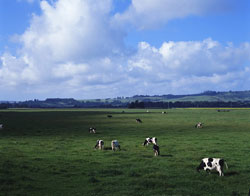Maintaining biodiversity in grazed grasslands
Ideally, livestock and grasslands enjoy a symbiotic relationship. However, unsustainable grazing practices can endanger the delicate balance that exists, putting the flora and fauna that inhabit the grasslands at risk. The EU's Life Quality Programme funded the FORBIOBEN project to investigate the impact of various livestock parameters on grassland biodiversity. The Dutch Butterfly Conservation (DBC) examined the role of breed and stocking rate, the number of animals per hectare of grassland. In collaboration with the other members of the FORBIOBEN consortium, DBC undertook extensive monitoring of the number and type of animals, large and small, in grasslands subject to grazing activity. Plots in five different EU countries were analysed in order to be as representative as possible. Not surprisingly, the DBC found that fauna biodiversity is enhanced when the stocking rate is decreased. The unexpected conclusion drawn from the research was that livestock species had little effect on biodiversity. These and other findings are being published by DBC and its partners in relevant scientific journals. DBC is also offering consulting services aimed at guiding intelligent grassland management policy and practice. Potential end users include the agricultural and conservation communities.







